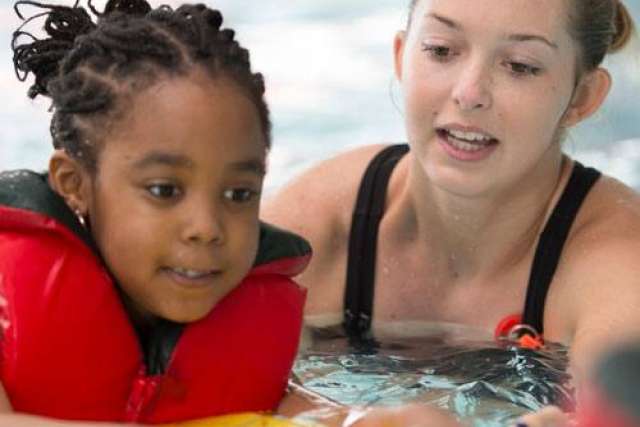Drowning takes the lives of close to 1,000 children every year. It is the leading cause of injury-related death among children aged 1 to 4. Adolescents aged 15 to 19 have the second-highest drowning rates, likely because they can be overconfident in their swimming skills and may use alcohol while swimming.
The American Academy of Pediatrics updates water safety guidelines Swimming ability differs among ethnic groups. 40% of Caucasian children have little or no swimming ability. That number increases to 45% for Hispanic children, and an alarming 64 percent of African American children can’t swim.
To combat the risk of drowning, the American Academy of Pediatrics (AAP) says children shouldn’t be left alone or in the care of another child when near standing water. They recently updated their drowning prevention recommendations for parents:
Address drowning hazards in the home The AAP recommends that pails and buckets be emptied immediately after use. Children should remain supervised near bathrooms because bathtubs and toilets are hazards:
- Infant bath seats can tip over. Even with only inches of water in a bathtub, children can drown.
- Children can drown in toilets. A toilet lock may prevent unintentional drowning.
Stay within an arm’s length of children when swimmingA caregiver with adequate swim skills should provide constant touch-ready supervision for infants, toddlers and noncompetent swimmers. Halt all activities that redirect your attention — using the phone, drinking alcohol or socializing — or ask another competent adult to supervise. The AAP also recommends:
- A supervising adult should be able to recognize distress and initiate rescue and CPR while ensuring someone makes a call for help.
- Stay vigilant even when a lifeguard is present.
Pool safetyPrevent unintended pool access by installing a 4-foot high fence around the perimeter of the pool. Ensure there is a barrier between your home and the pool. Pool alarms and weight-bearing pool covers offer additional protection, though these are not substitutes for a fence. Ensure you have rescue equipment such as lifebuoys or a reach tool handy. Pool owners, plus older children and adolescents in the home, should learn CPR.
Water competencyResearch suggests that swim lessons may prevent drowning. Children are usually developmentally able to begin lessons at age 1. Other water competency components include:
- Teaching a child to anticipate and avoid unsafe situations (such as swimming alone)
- Learning basic water survival skills
- The ability to recognize a swimmer who is in trouble
Watercraft safetyChildren and teens should wear U.S. Coast Guard-approved life jackets when on watercraft. To model safe behavior, adults should also wear life jackets. Air-filled swimming aids like inflatable armbands do not replace life jackets because they can deflate.
Diving safetyTeach children to know the depth of the water before diving in headfirst to prevent spinal injuries, which can lead to paralysis. Always enter the water feet first to assess the depth and whether there are any underwater hazards before diving.
Safety near open water environmentsOnly swim in areas that are designated as safe for swimming and that have lifeguards on duty. Even strong swimmers often cannot overcome strong waves or rip currents. In the event a child is caught in a rip current teach them to:
- Remain calm
- Swim parallel to the shore (not against the current) or tread water until they are safely out of the current
- Signal for help
Cold season water safetyWater safety is also necessary in winter. Teach children to refrain from standing, skating or driving on ice that is thin or thawing.
If you need additional support keeping children and teens safe when swimming, request an appointment with your UCLA General Pediatrics provider.



